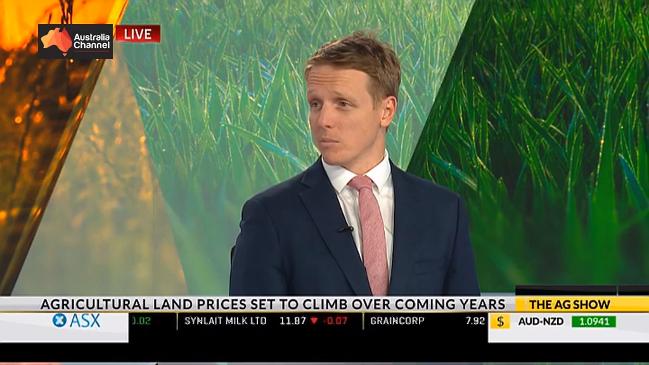Agricultural land values continue to climb due to high demand, limited supply
AS CITY house prices come off the boil, there is no peak in sight for agricultural land prices, which are sitting at a 10-year high.

AS CITY house prices come off the boil, there is no peak in sight for agricultural land prices, which are sitting at a 10-year high.
National agricultural land prices are tipped to continue to climb over the next two years on the back of high demand for agricultural properties, which in most regions will continue to outstrip supply.
That’s according to Rabobank’s inaugural Australian Agricultural Land Price Outlook report.
While the overall rate of price growth is predicted to slow due to dry conditions and weakening economic “tailwinds”, there is “no summit in sight”, according to Rabobank agricultural analyst Wes Lefroy, who authored the report.
Mr Lefroy told The Ag Show last week a number of factors had driven the increase in land values over the last decade.
“Over the last decade it’s been a period of strong growth,” Mr Lefroy said
“Ultimately if we have a look at what’s been driving land prices it’s been a rise in operating profits from farmers.
“We see that underlying demand for farmland expansion continuing, and continuing to drive prices upward, but we do note the dry across Australia which is going to act to curb growth in some regions.”
Mr Lefroy said macro-economic factors such as a falling Australian dollar and overnight cash rates at low levels has supported farmland purchases.
“[It has] played into export competitiveness and directly link in to operating profits as well,” he said.
“We’ve also seen commodities trading at a profitable range in particular wool, beef and sheepmeat which has played into operating profit.”
He said increased investment in agricultural farmland had also helped push prices.
While the median price for agricultural land in Australia has risen to $2278 per hectare, at a compound annual growth rate of 2.5 per cent over 10 years, there were some big differences between states.
And south eastern Australia was “leading the pack”, Mr Lefroy said.
“For example … Tasmania has capital annual growth rate of 4.9 per cent, and Victoria at 4.1 per cent,” he said.
“At the other end of the scale with lower growth was Western Australia at 0.7 per cent capital annual growth rate over the last decade, and Queensland at 0.3 per cent.”
Mr Lefroy said the difference was due to the “intensity of production”.
“In drier regions growth rates are much slower,” he said.
“Buyers are putting a premium on farmland where rainfall wasn’t as volatile.”
Underlying demand across many regions will continue to drive land values over the next two years, Mr Lefroy said.
Across Victoria, family farm consolidation and corporate entry had driven record growth rates over the past five years, particularly in Western Victoria.
Over the next two years, high farm consolidation will continue to drive demand in the Wimmera, while in the Mallee tightly-held property and low supply will support continuing growth in prices.
In northern Victoria a large number of family operations are seeking land for expansion, while lifestyle influence is adding to demand in North Central Victoria.
Western Victoria will experience sustained land price growth however, at slower rates, as property prices approach a peak and operating profits relative to the high cost of land are curbing some growth, although demand is strong, the report found.


